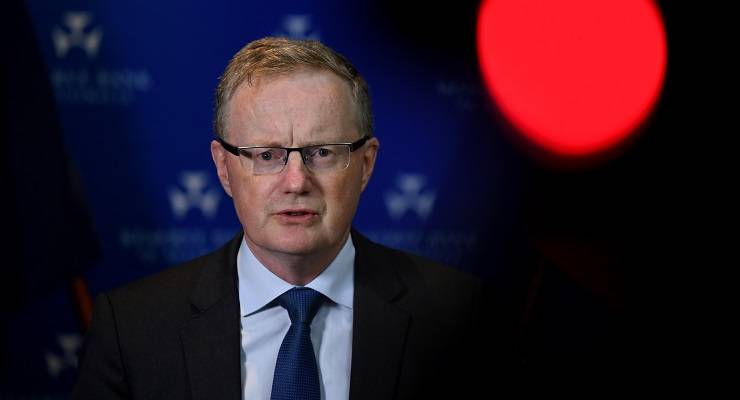
Central bankers are generally loath to talk about the future direction in interest rates. But the Reserve Bank (RBA) has been routinely forecasting for the last 12 months that it expects interest rates will rise in 2024 — but only if wages growth ends “materially higher than it is currently”.
For the past three months or so, however, the RBA has also been signalling that the bank’s July policy meeting will see two significant decisions made on other aspects of monetary policy. They are whether “to retain the April 2024 bond as the target bond for the three-year yield target or to shift to the next maturity, the November 2024 bond” and to finish or extend its current quantitative easing program after the current $100 billion in bond purchases ends.
The decision on which month — April or November, 2024 — is the more important. The bank has been holding the three-year bond rate at 0.1% for more than a year by buying bonds in April 2024 issues, thereby keeping the price of the bonds high enough for the yield to remain at 0.10%.
Deciding in July whether to keep the current April target or switching to November will give us a big hint as to when it will lift interest rates. It will also signal how the bank regards the current trajectory of recovery, which has been much stronger than anticipated but which is also hostage to further lockdowns like the current one in Victoria.
What’s the difference between April and November? If the RBA maintains April bond purchases, it will tell us the central bank is confident the goals of rising inflation, falling unemployment and higher wages are achievable by the 2024 deadline. But if the bank switches the target month for the bond buying to November, it’s a sign it doesn’t believe it can achieve the policy targets of higher wages, low unemployment and inflation “sustainably” in the middle of the 2% to 3% inflation target range. So 2025 will become the new target year — meaning another 12 months or more of record low interest rates.
The RBA’s decision on whether to extend bond purchases beyond September into a second $100 billion of purchases will similarly reflect its confidence in employment growth of sufficient magnitude to drive wages growth up by 2024 and the need to put an effective lid on the Aussie dollar by buying as many 10 year bonds (around $5 billion a month) as it has to.
Preparations will start at today’s June policy meeting. Governor Philip Lowe has a major speech timed for June 17 in Toowoomba, where the July meeting will no doubt feature heavily in questions. He is also down to take part in a finance forum in Sydney on June 30 (the last day of the financial year). That’s only a week before the July 6 meeting. By then he will have the arguments sorted out in his own mind about what will happen.
The decision will be a de facto vote of confidence by the RBA board in the government’s economic strategy of pushing unemployment down and wages up with its big government, big spending fiscal approach. A decision to switch to November 2024 bond purchases, and extend purchases into a second $100 billion beyond September, will be a clear vote of no confidence in the government’s policy framework and forecasts, while keeping April 2024 and halting bond purchases will suggest the bank is confident the recovery will be sustained.
That will also be the start of a return to something approaching normal in monetary policy terms — although only the pre-pandemic normal of disinflation and record low interest rates.









Inflation might catch them by surprise. The June quarter figures will be particularly interesting as last June’s quarter was negative, that is being speculated to give an annual figure around 3.75% according to one analyst, so it might jump their comfort bandwidth of 2-3%, and that just might frighten the horses.
The damned bond market is some sort of joke at the moment. My bumbling superannuation outfit, a big one, recorded a 2.5% drop in February alone (annualised at 30% loss of value). Some serious funny business is going on there (how do you lose money on bonds). I’m expecting more shenanigans. Interestingly, they also lost money on bonds when interest rates were dropping, no mean feat. I’m out now, just cash earning 0.1%. Everything else is a crap shoot now.